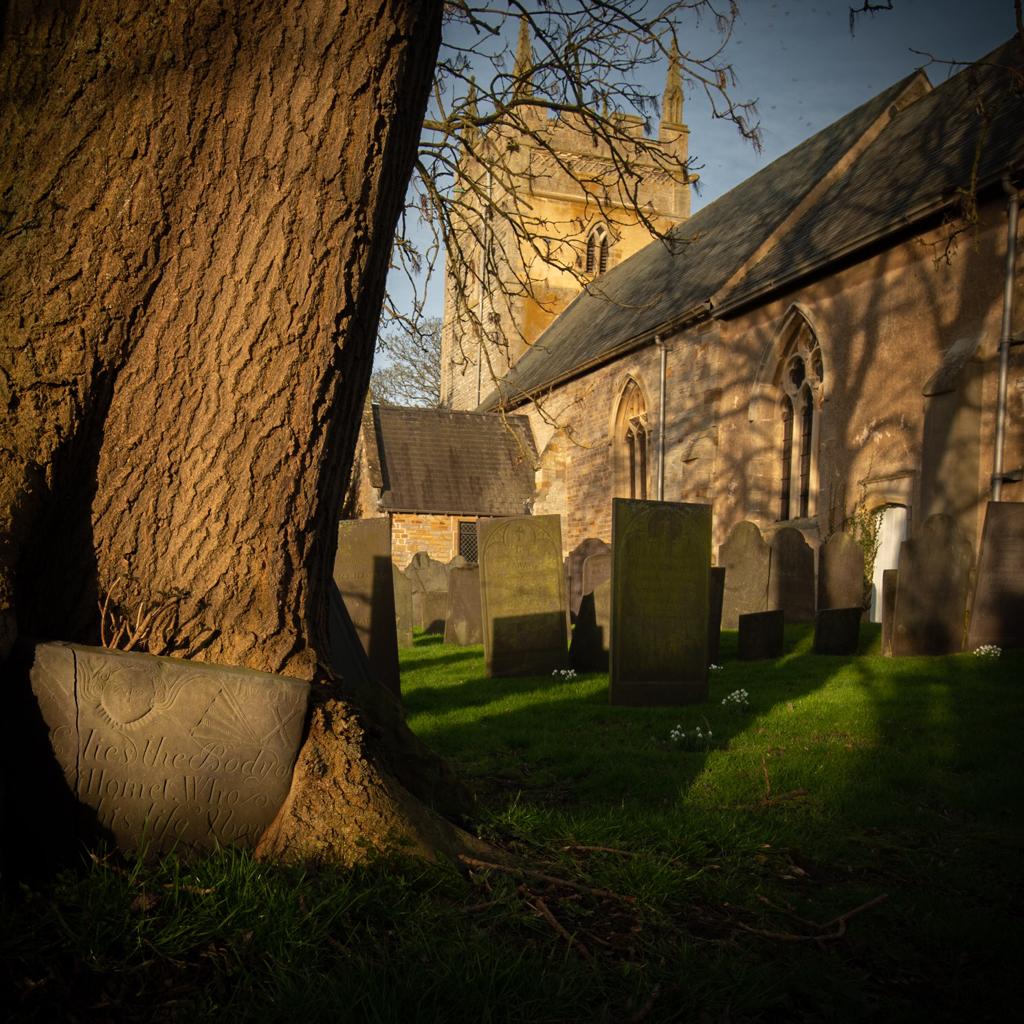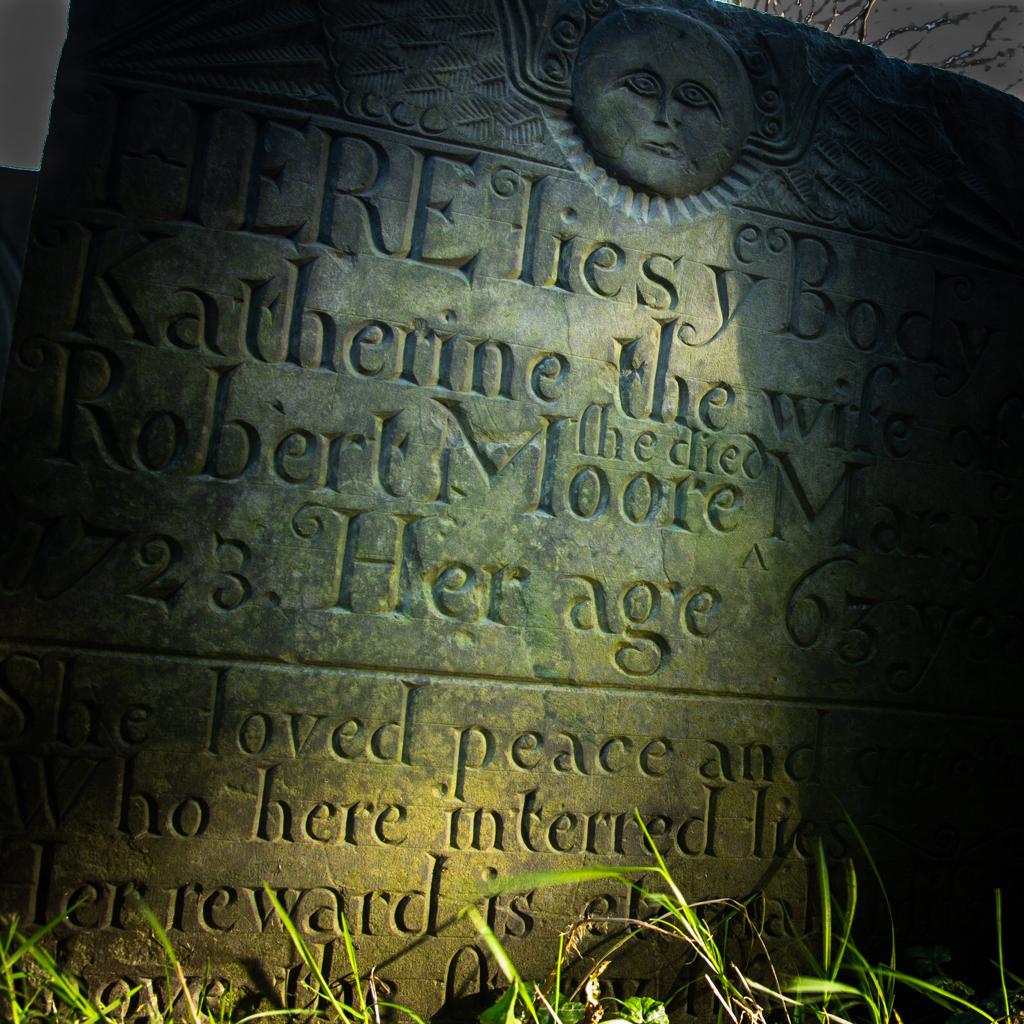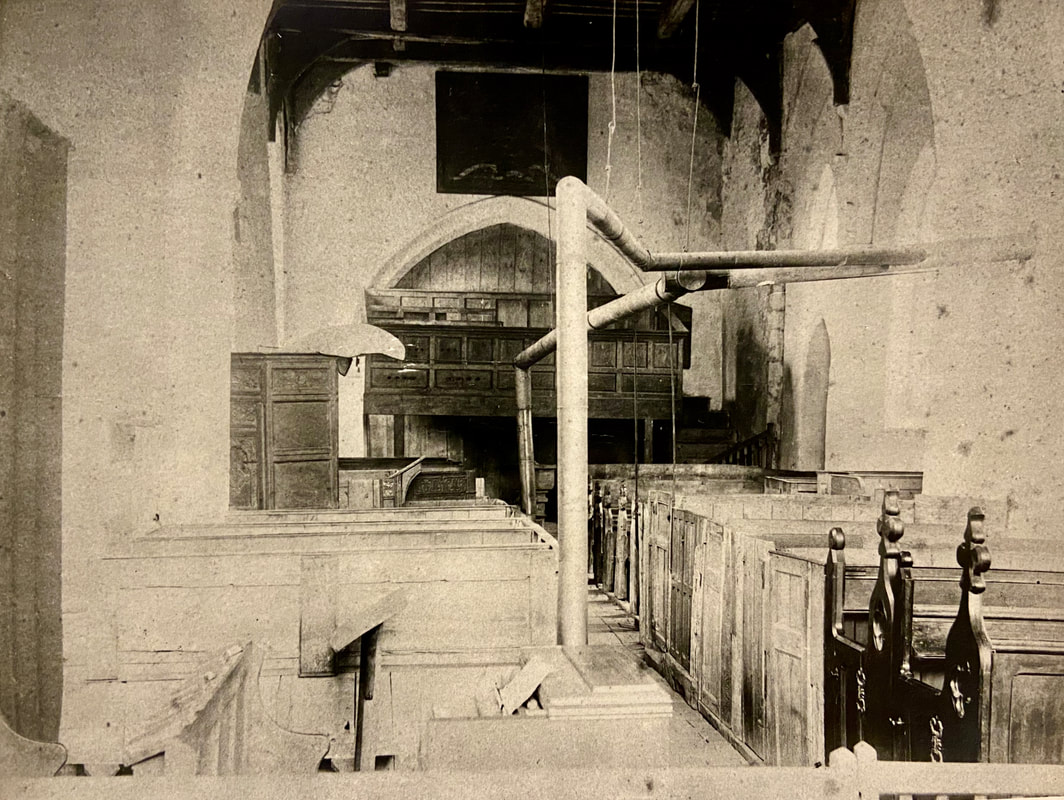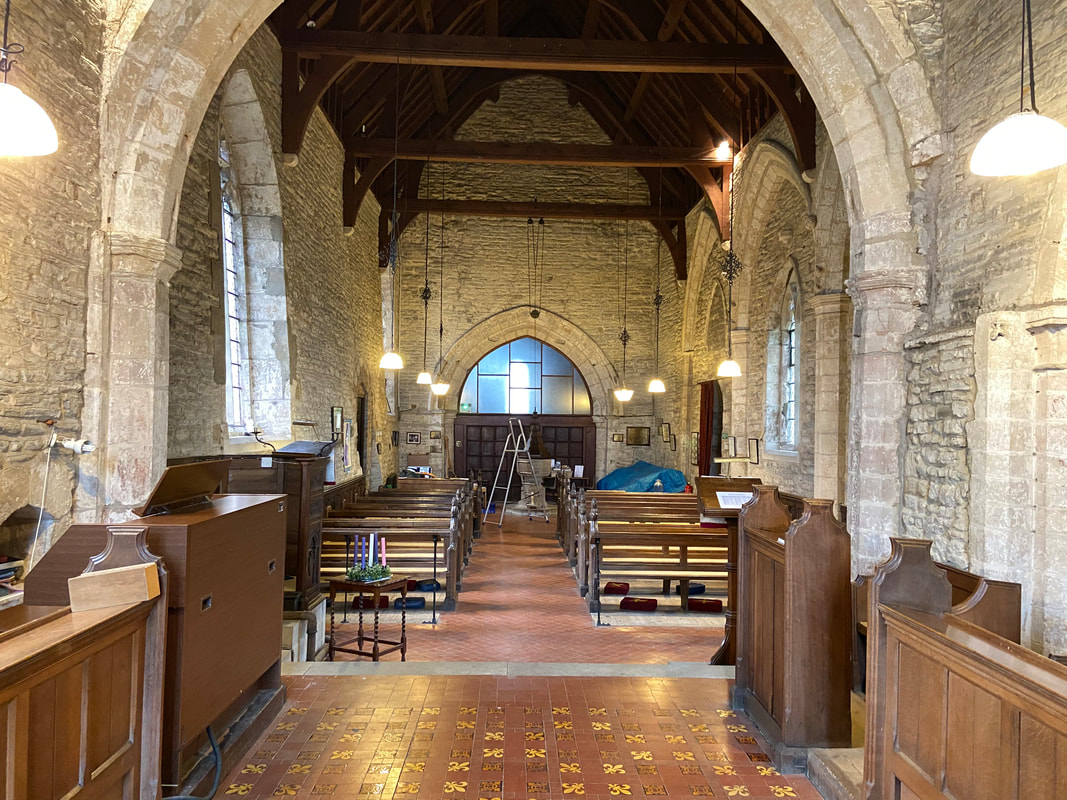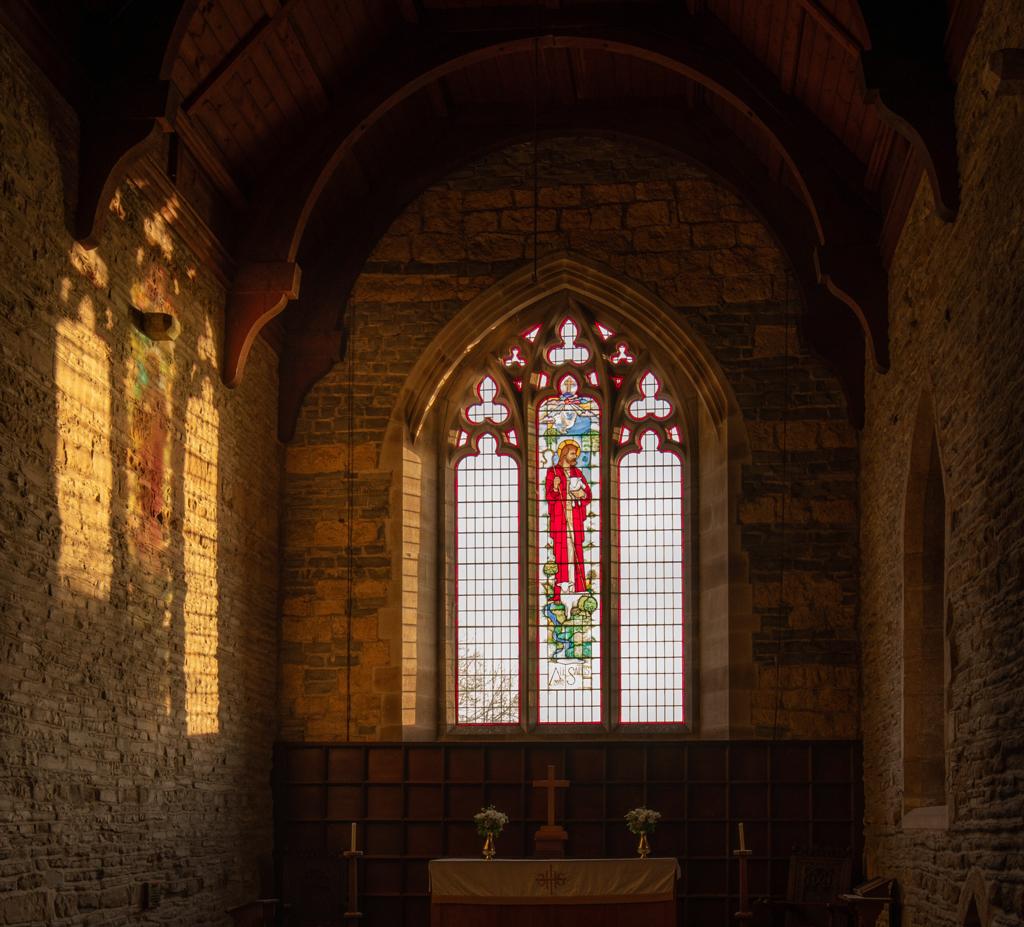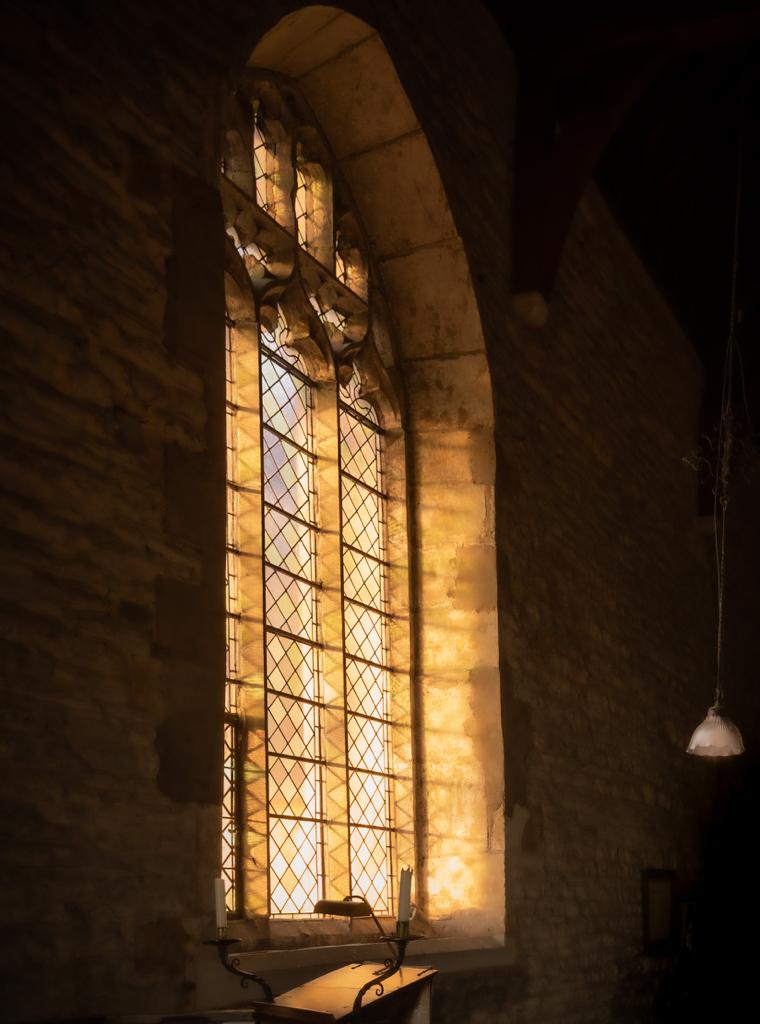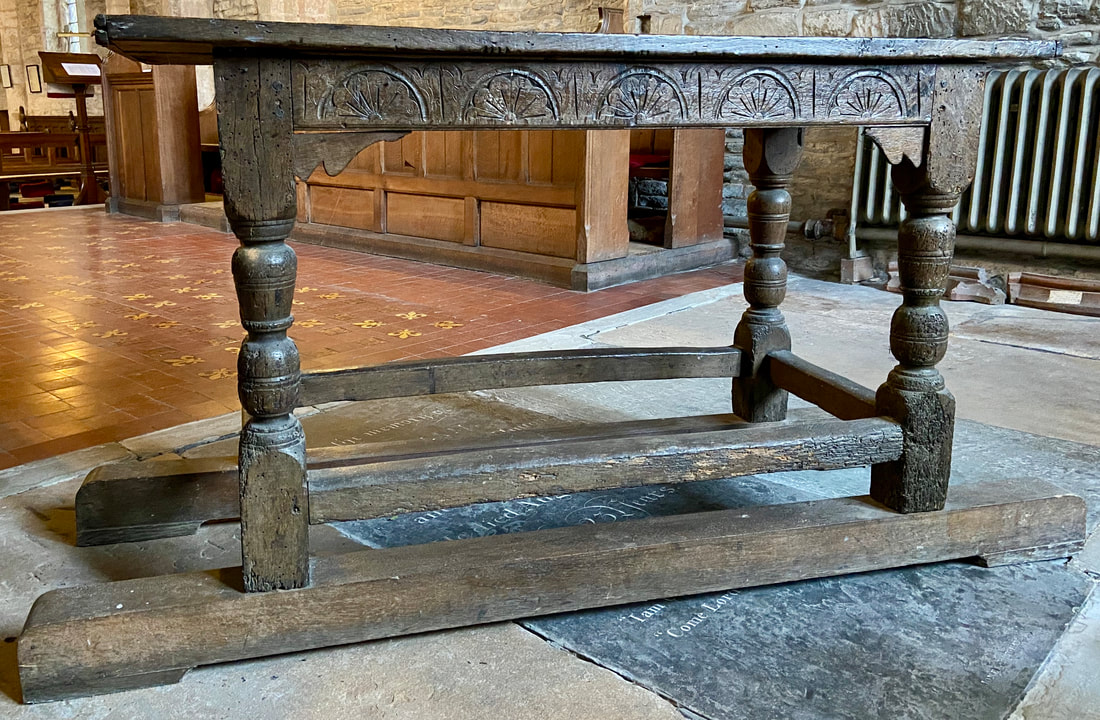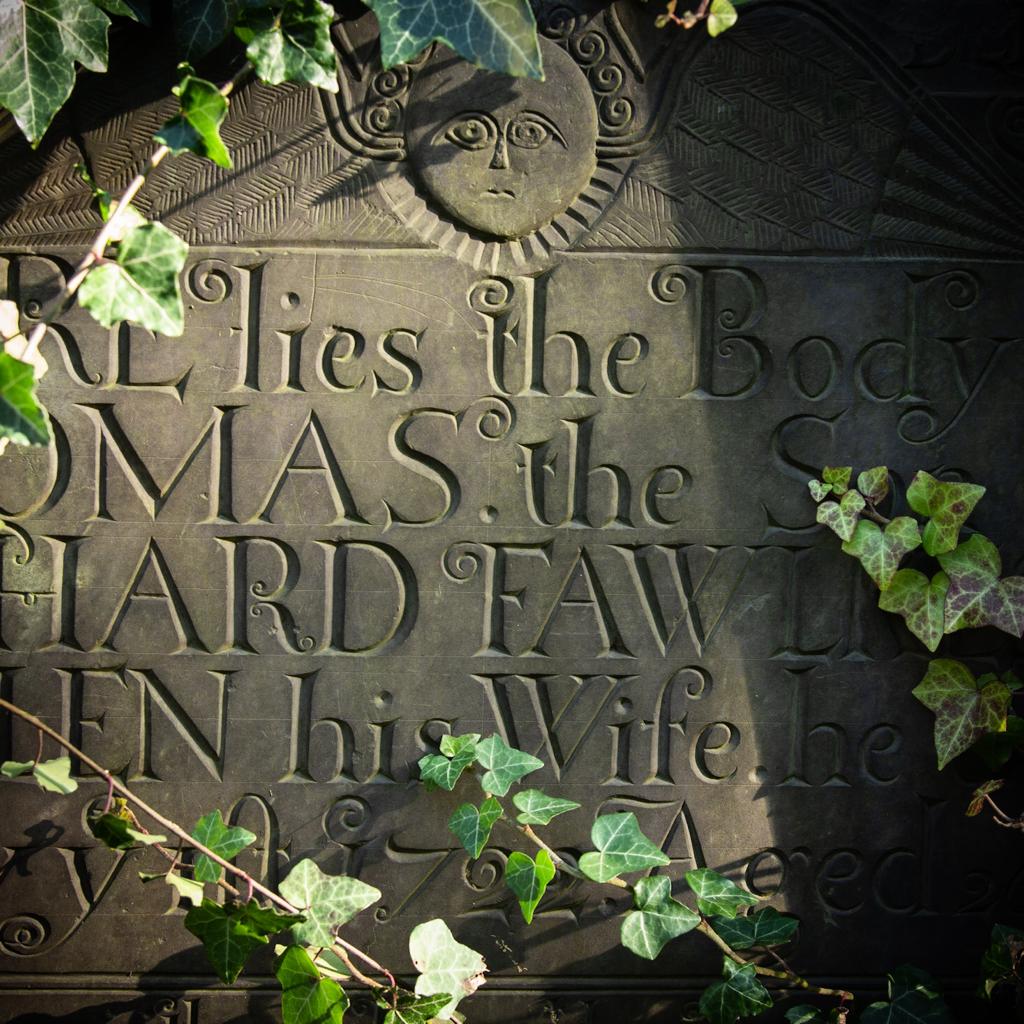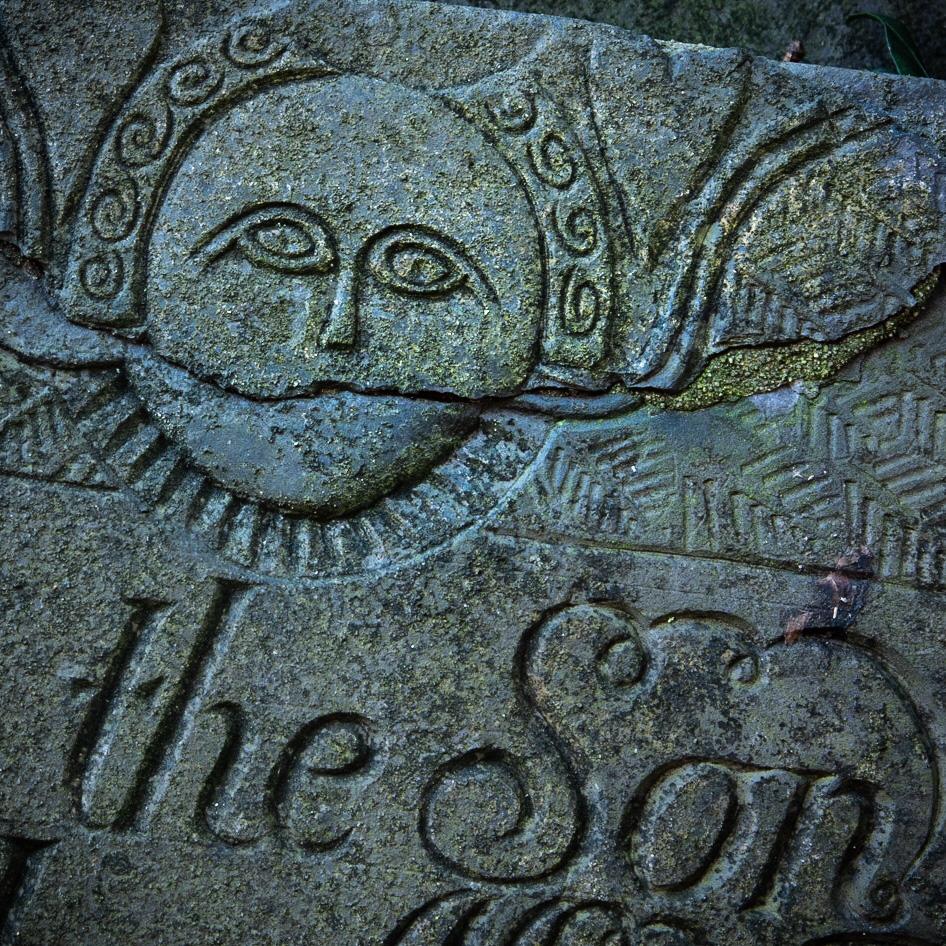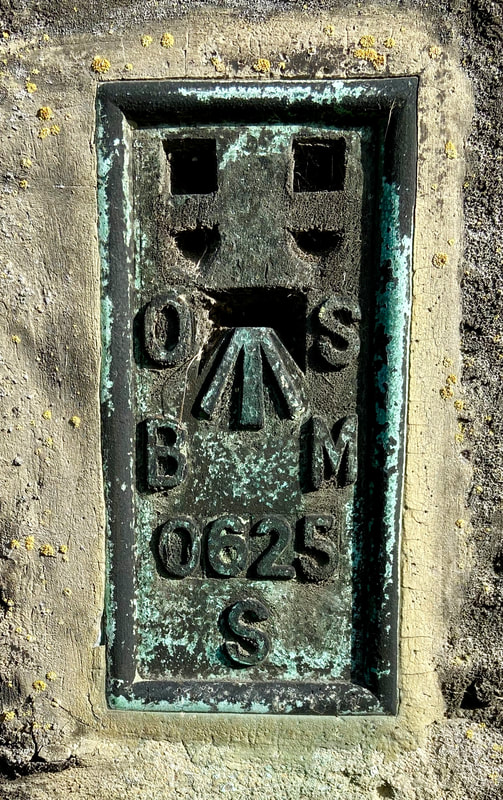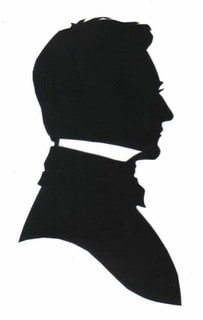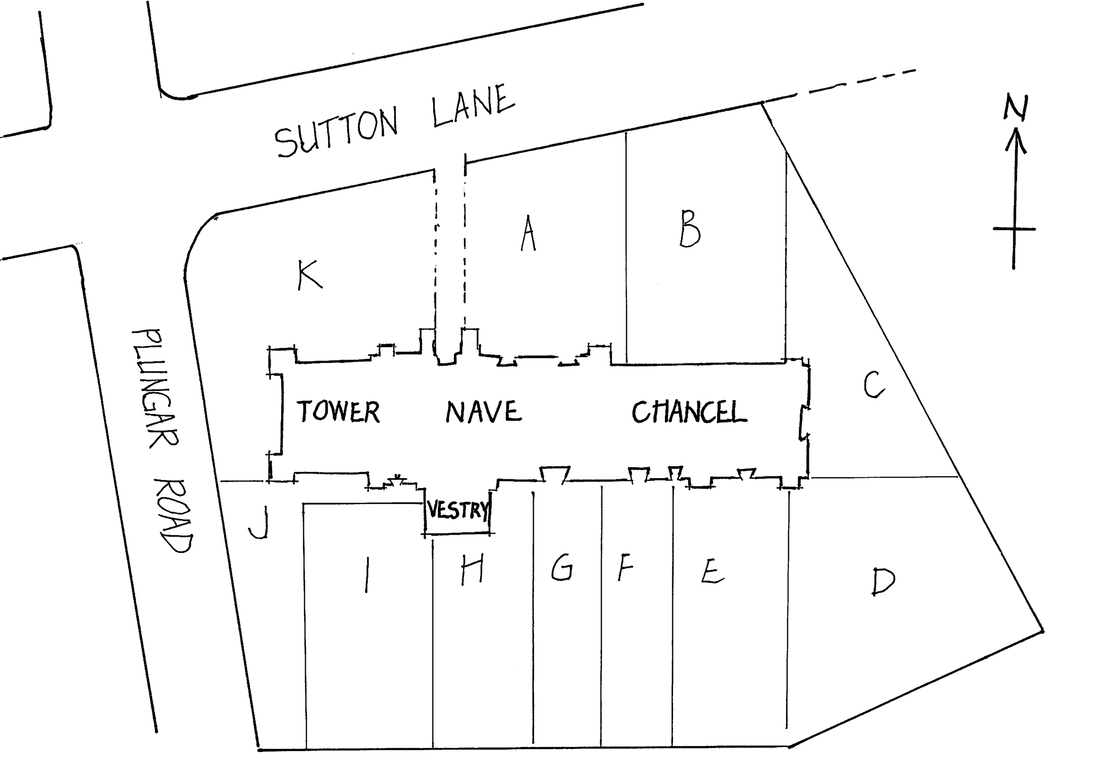All Saints ChurchResearched by Brenda Preece.
Photographs © BluStorkStudio of Granby at www.blustorkstudio.com and John Rainbow, Creative Commons* |
BackgroundThe Church, currently consisting of Nave, Chancel, Tower and Vestry, stands in a closed Churchyard in the centre of Granby.
Domesday records show that a church was built by William D’Ayencourt, a priest, before the Norman conquest. The records also mention a second church at Sutton, St. Etnelburga’s but this has long since disappeared, although the field in which it stood is still called the Holy Field. The probable date of the foundation is roughly 1150 A.D. although the first mention on the list of incumbents is William Punch 1253 A.D. In 1155, Ralph D’Ayencourt founded the Priory of Thurgaton and gave to the Prior the livings of Granby and several other Vale of Belvoir churches. At the dissolution of the monasteries the patronage passed from the Prior to Queen Mary and King Philip of Spain, then to Queen Elisabeth who gave it to John Manners, founder of the Ducal Rutland line. The present patron is the Bishop of Southwell. The present building, suffered greatly in the past from vandalism and neglect. The mediaeval church consisted of Nave, Chancel, North Aisle with two bays, Chapel of St Nicholas, Priest's chamber over the North Porch, Tower and Steeple, with a ring of eight bells. A partial restoration took place in 1888, the cost, £1,800 being raised by public subscription. The Duke of Rutland headed the list with £500, the Vicar, the Rev H. Hamer, gave £100, and nineteen clergy, headed by the Bishop, gave £101. However, the work was not entirely satisfactory. For example, the 14th century terra cotta font was turned upside down to make a base for a new stone bowl, the tracery of the East Window, a very rare example from the early 16th century, was replaced, but no repairs to the tower were undertaken, and it continued to deteriorate. |
The TowerWalls of immense thickness suggest the tower may have been used as a stronghold and it is probably the oldest part of the building. In 1777, the tower (see the framed picture on the nave wall) was either removed or struck by lightning and never restored. Instead, the Tower was given a flat lead roof. Ornamentation was salvaged and reconstructed but only roughly five feet of the original tower remains.
A musicians gallery was erected under the arch of the tower (see the 1860/1870 photograph below), for which great holes were hacked in the stonework of the 13th century arch but was subsequently removed. All except two of the pre-Elizabethan bells remained, the others possibly being melted down at the time of the civil war. There was an English doorway in the tower which, it is said, the Incumbent blocked up to stop the ringers slipping away from church. A fine rood screen disappeared like the bells. In 1959 an old oak screen from a ceiling at Rufford Abbey was fitted with glass above at a cost of £130. After the Second World War, the tower and the bells were found to be unsafe resulting in a complete reconstruction in 1950 by Messers Bowman of Stamford at a cost of £1,037. The huge oak bell cage was riddled with 'beetle', the roof of the tower was supported by one rotten beam, the louvres were broken, and scores of pigeons had made a roost of the belfry. In 1953, the five bells were re-fitted and hung in a steel frame by Gillet & Johnston of Croyden at a cost of £880, a sixth bell being added later. Lightning conductors were fitted to the four pinnacles of the tower.The altar was restored in oak in memory of William Henry Jenkins, a former Vicar. A new clock was added in the millenium year 2000 with its face on the west side and a hammer strike was added in 2005. |
Nave |
|
The original studded door remains. The ancient font was turned upside down to form the base of a newer stone font. the north side of the nave seems to be leaning out although it appears vertical on the outside. It is possible that this was done to strengthen the foundations.
In pre-Reformation times, there was a north aisle dedicated to St. Nicholas with three altars and a rood screen. About 1776, the Churchwardens obtained permission from the Chancellor to pull down the North Aisleand Chapel on the ground that they were in a ruinous condition. The arcading of the North Aisle and the two windows built into the the present North wall, but the Priest's chamber disappeared. Windows |
|
On the North side there are two early English windows with a carved stone head above each one. There is a stones buss on each arch, grotesque face. On the south side, there is one Lancet and one perpendicular window.
|
Chancel |
|
The south side windows are of the Transitional period. The doorway is Stuart with a gravestone forming the lintel. There are three Aumbries, one with wooden doors. There is an ancient oak table formerly used as an altar and a cross from the Flanders battlefield (see below). There is said to be a stone bee on the chancel above the Incumbent’s chair.
The Queen Anne altar rails have gravestones in front, one of which is inscribed as Abigail Frost, sister of Thomas Seekes, Archbishop of Canterbury. The Reredos are from Rufford Abbey. The tiles in the sanctuary are English and mediaeval and have a Fleur de Lyse patter. The roofs of the Chancel and Nave, infested with 'beetle', were treated by Messrs. Jaques, of Bingham who also in 1958 opened the South Porch and built the Vestry at a cost of £875. The original east window was built of 16th century terra cotta. The diamond pattern windows were installed later and can still be seen but the present day stained glass window was designed and installed by Michael Stokes of Edwinstowe in 2002. In 2009 the roofs of the chancel and the nave were replaced with Cumbrian slate along with other reconstructive masonry work. This work was supported by a grant from English Heritage. |
Benches |
|
The 15th Century poppyheads were probably carved about 1440. They consist of:
|
Pulpit |
Churchyard |
|
The Churchyard contains some very finely inscribed headstones including 22 examples inscribed with 'Belvoir Angels'. An old scratch dial is just discernible on the South buttress of the Tower.
The worn out stone on the War Memorial in the Churchyard was replaced by a plaque of Westmorland stone with inscription and names of the Fallen, the cost being met by relatives and friends. |
Ordnance Survey Bench Mark |
|
Have you discovered this flush metal plate secured to the South side of the tower? Ordnance Survey Bench Marks were installed by the Ordnance Survey department throughout the UK to record the height above mean sea level as determined by the Ordnance Datum at Newlyn in Cornwall. A special bracket was clipped on to provide a horizontal measuring ledge dating from the 2nd Geodetic Survey of the 1920's and last verified in 1962. Its height above sea level is 34.506 metres. This system has largely been superseded by global positioning systems.
Look out for the Ordnance Survey cut mark in the cemetery on Sutton Lane, recorded as 35.942 metres above Ordnance Datum. |
Additional Information |
|
Additional information for researchers is published online by the Southwell and Nottingham Church History Project.
|
Churchyard ResearchThis section was created as a result of an idea to make family research easier for those living outwith the parish who might have ancestors who were buried in All Saints graveyard, Granby during the 18th and 19th centuries. The Churchyard was closed to burials following an ‘Order in Council’ on 15 January 1897 and replaced by the Parish Cemetery on Sutton Lane which does not form part of this project. The onsite survey was undertaken by John Rainbow and David Powell in February 2020 with additional family background research by Carole Rainbow
|
Is he your relative? |
|
The not to scale illustration of the graveyard shown above, has been subdivided into sections to make searching a section easier rather than the whole area and corresponds to the location shown in the alphabetical list which can be read through this link.
Errors may have been transposed from parish records and details may have been unintentionally omitted, but can be corrected by contacting John Rainbow. Apart from a handful of headstones that are worn and unreadable, the remainder date from 1710 (William Rick) until 1894 Elizabeth Wakeline) in a mixture of material, design and size including 22 carved with 'Belvoir Angels' and some family tombs. |
